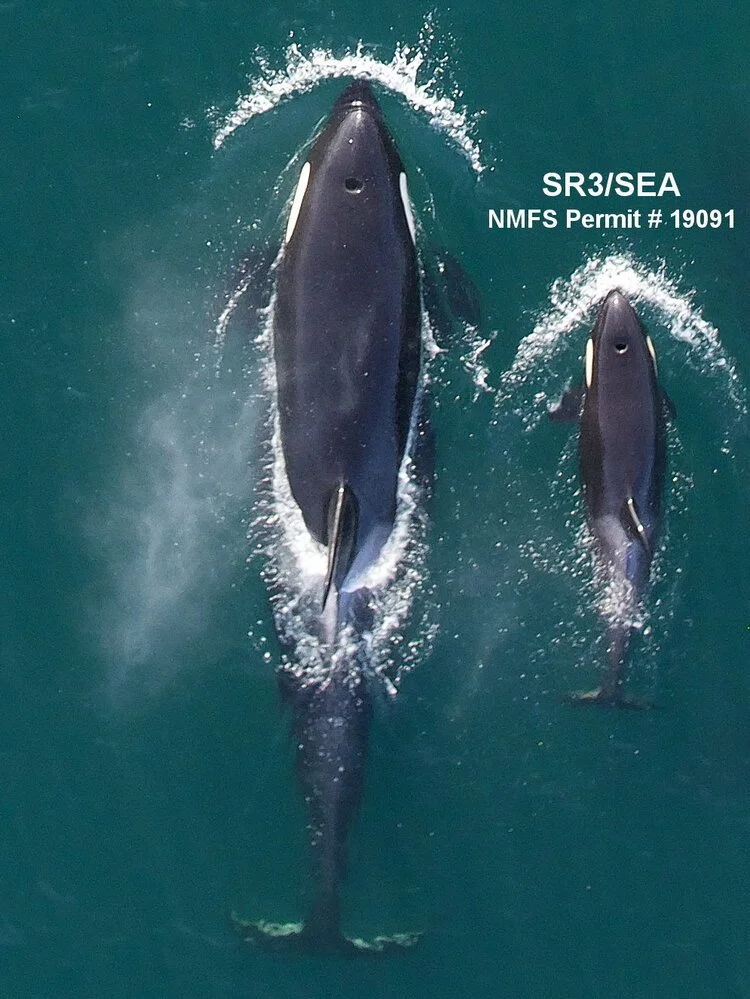Winter Health Monitoring Update!
SR3’s Dr. Holly Fearnbach and colleagues Dr. John Durban (Southall Environmental Associates, SEA) and Jessica Farrer (SR3) have collected valuable winter data on the health of killer whales in the Salish Sea. So far, the team has used a remotely-controlled multicopter drone to non-invasively collect aerial images of all 22 members of J-pod from the endangered Southern Resident killer whale population and almost 40 Bigg’s transient killer whales. These are the first aerial images of killer whales collected by the team during winter months, providing important data on seasonal changes in body condition. Quantitative photogrammetry analyses of these images is underway, but J-pod whales appear to be in relatively decent body condition at present, at least compared to some previous May and September sampling periods, but not as robust as the Bigg’s killer whales. The team will continue collecting comparative data on killer whale condition throughout the year, to help guide conservation measures to maintain adequate year-round prey availability. Next week the team is beginning a new project to assess the health of gray whales that stopover in Puget Sound to feed each spring, in collaboration with Cascadia Research Collective. More updates to come!
Aerial images of Southern Resident killer whales: (Left) an adult female (J31) and her newborn calf (J56). J56 was the most recent addition last year to this endangered population, and mom appears to be in robust condition despite the high energetic cost of lactation. (Right) an adult male (J27), the largest whale in J-pod. Images obtained using an unmanned hexacopter that was flown non-invasively >100ft above the whales under NMFS permit #19091.


